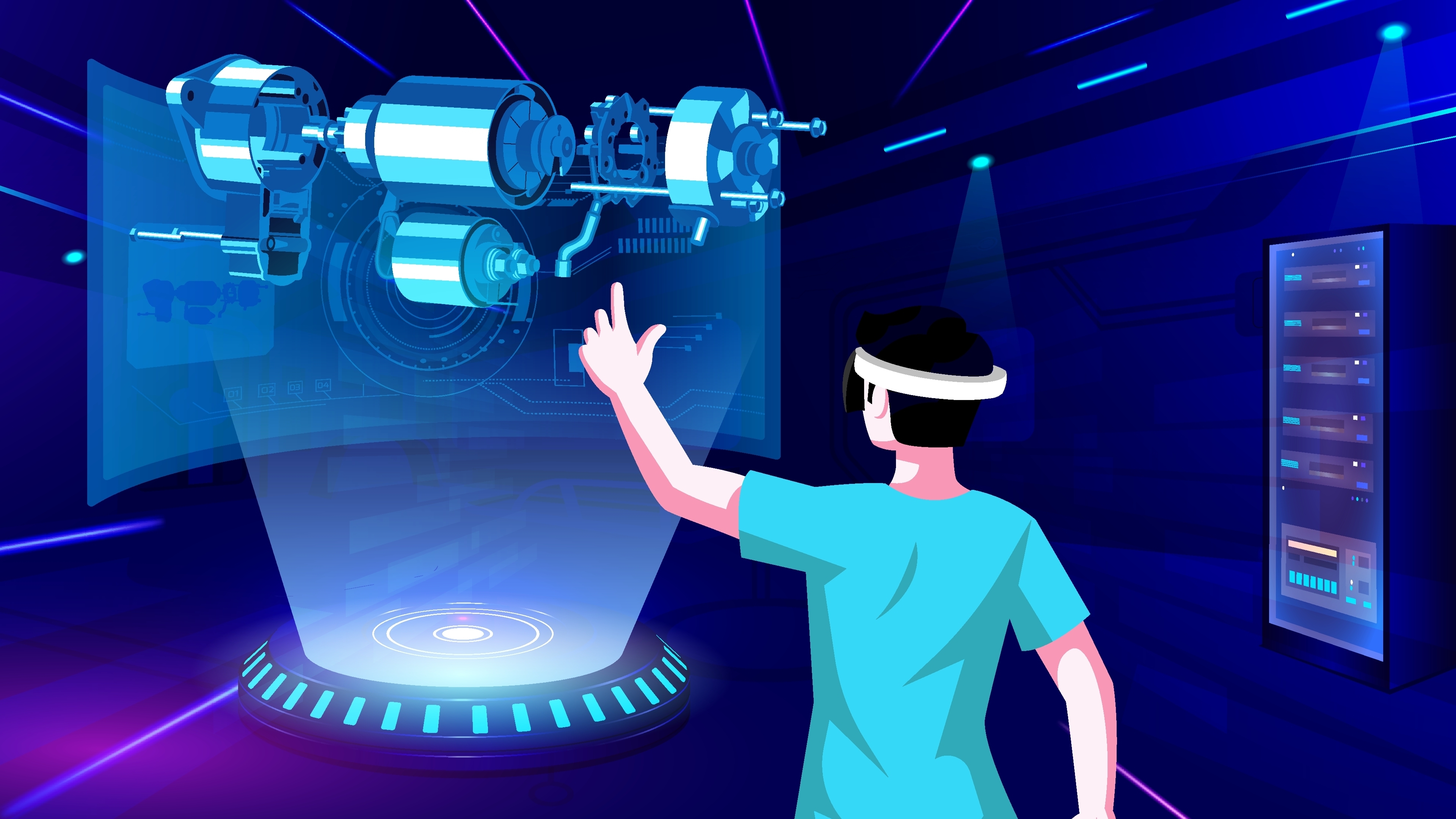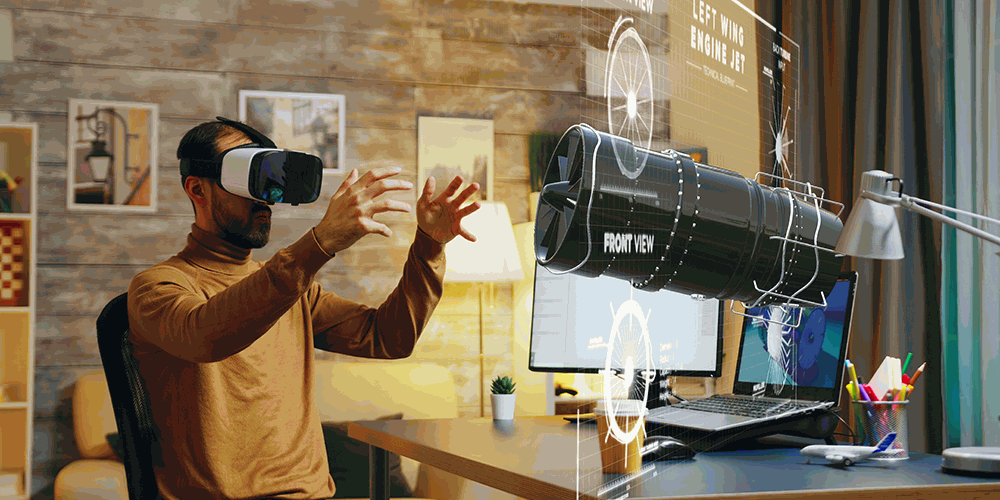Applications of VR in Telecommunication Engineering

In a world that’s fueled by connectivity, leveraging VR in telecommunication engineering emerges as a beacon of technological advancements.
The swift cadence of innovation has not merely transformed the modes of communication but has uncovered a tapestry of possibilities that were once deemed futuristic.
In this exploration, we’ll delve into the amazing future of VR in telecommunication engineering and understand how virtual reality in engineering education plays a pivotal role in bridging the gap between educators and learners.
Concepts of VR for Telecommunication Engineering - The Catalyst for Change
Telecommunication engineering encompasses the creation, enhancement and fine-tuning of equipment, networks and communication systems.
And, when it's about applications of VR in telecommunication engineering, telecommunication engineers play an inescapable role facilitating a seamless and effective information flow, enabling the realization of immersive virtual reality experiences.
Herein, we’ll shed light on the typical intricacies in the field of telecommunication engineering and how the benefits of VR in telecommunication engineering enable learners to learn in a risk-free environment.
Representation of Elaborate Concepts in Telecommunication Engineering
In the realm of telecommunication engineering, grappling with intricate and abstract concepts is a common challenge.
Here, Virtual reality emerges as a powerful solution to this issue by offering interactive and visual representations of these complex ideas.
Within the field, phenomena like transmission line and waveguides, digital signal processing, electronic circuits, can be vividly visualized and manipulated through Virtual Reality experiences, contributing to heightened understanding and improved knowledge retention.
Design Innovation and Prototyping Improved with VR Solutions

Virtual Reality (VR) solutions contribute significantly to the electronic prototyping process by offering innovative tools and capabilities that enhance various aspects of development.
Here are ways VR engineering aids in electronic prototyping:
✔️ Visual Representation
VR provides a realistic and immersive visual representation of electronic prototypes.
Engineers and designers can view and interact with 3D models of electronic components and systems, gaining a better understanding of their spatial relationships and overall design.
✔️ Simulation of Functionality
Virtual environments allow for the simulation of electronic device functionality.
Engineers can test and validate the performance of different components and systems in a virtual space, identifying potential issues and refining the design before physical prototyping.
✔️ Iterative Design
Prototyping in the virtual world enables quick and cost-effective iterations. Engineers can modify designs on the fly within the virtual environment, instantly observing the impact of changes.
Getting hands on this approach enables students to accelerate the development cycle and helps in refining the electronic prototype efficiently.
✔️ User Experience Testing
For electronic devices with user interfaces, VR allows designers to simulate user interactions. This helps in assessing the usability and ergonomics of the device, ensuring a positive user experience.
✔️ Training and Skill Development
Virtual reality helps in learning and having a better insight of electronic prototyping techniques.
After all, virtual simulations provide a risk-free environment for learning and practicing complex procedures, contributing to skill development.
✔️ Data Visualization
VR enhances the visualization of complex electronic data. Learners can explore and analyze intricate circuit designs, simulations, and test results in a more intuitive and immersive manner, aiding in data-driven decision-making.
Real-world Simulations for Practical Skills

Virtual simulations have revolutionized the landscape of telecommunication engineering, offering students an innovative approach to design, analyze and optimize performance, before physically developing them.
This digital revolution offers several advantages for telecommunication engineers:
✔️ Cost-Effective Testing
Simulations present a cost-effective means of testing and validating product concepts.
By replicating intricate real-world environments digitally, learners are able to pinpoint potential issues early in the development phase, leading to substantial time and resource savings.
✔️ Enhanced Product Performance
Simulations empower students to meticulously study and optimize product performance across various parameters, including stress, heat transfer, fluid dynamics, and structural integrity.
Fine-tuning designs in the virtual realm ensures heightened product reliability, efficiency, and safety.
✔️ Exploring What-If Scenarios
The flexibility of simulations enables engineers to delve into diverse what-if scenarios without the need for physical experimentation.
This adaptability fosters a deep understanding of complex systems, allowing for informed decision-making based on simulated results and fostering an environment conducive to innovation and creativity.
Finally… The possibilities are limitless
The applications of Virtual Reality (VR) in telecommunication engineering herald a transformative era for the industry.
In essence, VR's potential to visualize complex concepts to revolutionize product development has reshaped the educational and professional landscape alike.
The cost-effective testing provided by simulations not only identifies potential issues early but also conserves valuable resources.
Rapid prototyping, facilitated by virtual simulations, accelerates design iterations and enhances the overall product development process.
Moreover, the ability to explore various what-if scenarios without physical experimentation fosters innovation and creativity.
As telecommunication engineers embrace VR, it not only enhances comprehension and decision-making but also contributes to a more efficient, agile, and forward-thinking industry.
The marriage of VR technology with telecommunication engineering is not merely a tool; it's a catalyst for progress, ushering in a new era of immersive, efficient, and innovative practices.



